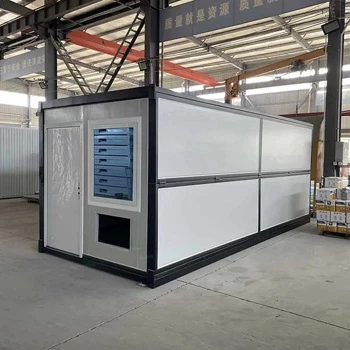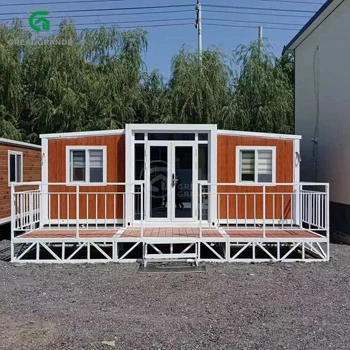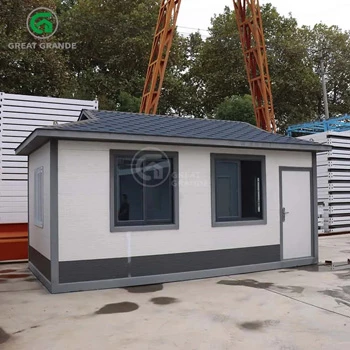Temporary modular housing is a modern form of construction that uses a modular design concept to pre-manufacture and assemble various parts of the house on site. This type of house is usually used for short-term or emergency living needs, and is characterized by rapid construction, easy relocation and disassembly. Compared with traditional construction methods, temporary modular container housing can more efficiently meet the needs of temporary accommodation or workspace, especially for disaster relief, construction sites and other occasions that require rapid construction and use.
The design of temporary modular housing is very flexible, and the modular structure allows units with different functions to be spliced, expanded or combined to adapt to different usage scenarios. Compared with ordinary buildings, the biggest advantage of this type of house is that its construction time is extremely short and can be built in a few days or weeks, so it can quickly respond to emergency needs and solve short-term living and workspace problems.
Design features and types
The design of temporary modular housing relies on standardized building modules, which can be freely combined and resized according to needs. Each module is pre-manufactured and usually includes basic components such as walls, windows, doors, floors and roofs. Through simple connections, these modules can quickly form a complete house structure. More importantly, the design of temporary modular houses not only focuses on practicality, but also provides a variety of customization options according to needs to ensure the comfort and convenience of residents.
For example, expandable temporary modular container houses are a common design. Container houses use standard container structures and can provide multiple functions such as living and office after simple transformation. Container houses are sturdy and durable, and can be spliced as needed to form a larger space, so they are suitable for various temporary living needs. Compared with traditional buildings, container houses are built faster and at a lower cost. In addition, the mobility of container houses in different occasions is also its significant advantage, especially suitable for places that need frequent relocation.
Another common type of temporary modular house is temporary modular folding container house. This kind of house has a compact structure and is foldable, which can greatly save space during transportation and storage. Folding container houses can be quickly unfolded when needed to become a complete living space. When no longer needed, the house can be refolded and stored, which provides a flexible solution for many temporary living needs.
Applicable scenarios
Temporary modular houses are widely used in various scenarios that require temporary accommodation or workspace due to their convenient construction methods and flexible designs. After a natural disaster, temporary modular houses can quickly provide emergency shelters and help disaster victims restore basic living conditions. On construction sites, workers’ accommodation needs can also be met by such houses. Military camps, temporary office areas, large-scale event sites and other places can also use temporary modular houses to quickly build corresponding living or working environments.
In addition, temporary modular houses are also suitable for some places that need to be moved regularly. For example, the design of folding container houses is very suitable for use as mobile accommodation facilities, especially in areas where long-term construction is inconvenient. They not only provide comfortable living space, but also can be built and disassembled in a short time, reducing the cost of relocation and storage.
Economic and environmental advantages
The construction cost of temporary modular houses is relatively low, partly because they use prefabricated modules and standardized production processes, which reduces the difficulty and time cost of on-site construction. Compared with traditional construction methods, the construction process of modular houses produces less waste and has relatively less negative impact on the environment.
At the same time, the detachability and reusability of temporary modular houses give them obvious advantages in environmental protection. Many house modules can be used multiple times, and can even be assembled and disassembled repeatedly at different locations, which greatly reduces the waste of resources.
Conclusion
As a convenient, efficient and flexible housing solution, temporary modular housing is gradually becoming the first choice for emergency and short-term residence. Whether it is expandable temporary modular container housing or temporary modular folding container housing, these innovative designs provide practical solutions for different application scenarios. With the development of technology and the increasing demand for flexible space, temporary modular housing will play a more important role in various fields in the future.






